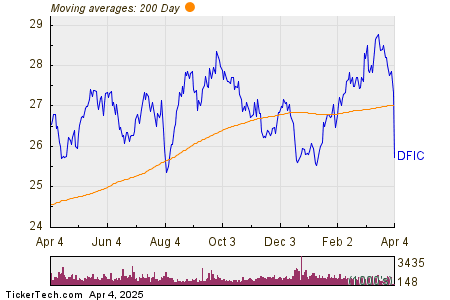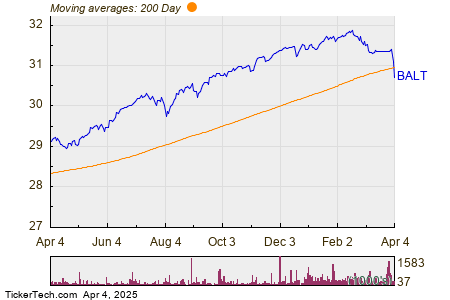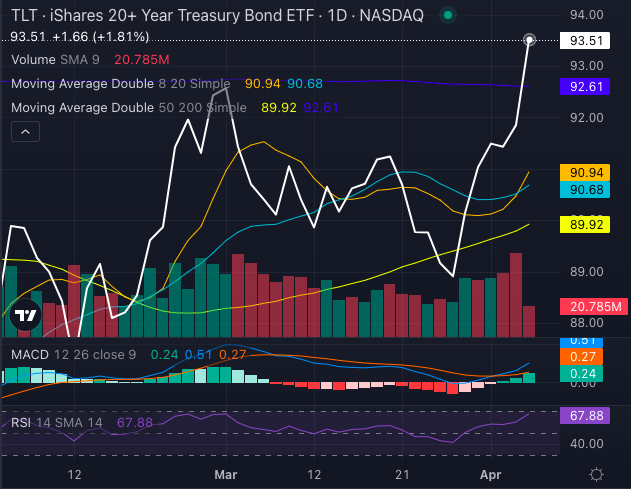Coffee Market Update: Prices Mixed Amid Trade Tariff Concerns
May arabica coffee (KCK25) settled down by -3.60 (-0.93%) on Thursday, while May ICE robusta coffee (RMK25) closed up +5 (+0.09%). Coffee prices exhibited mixed results. President Trump’s introduction of reciprocal tariffs has fostered a risk-off sentiment across most asset markets, raising worries about consumer demand and thereby influencing coffee prices negatively. In contrast, robusta coffee overcame initial losses on Wednesday, motivated by fears that Trump’s hefty 46% tariff on Vietnam’s exports might disrupt coffee flows and intensify existing supply issues. Vietnam stands as the world’s largest producer of robusta coffee.
Commodity Bulletin: From crude oil to coffee, this FREE newsletter is for industry pros and rookies alike.
Over the past week, coffee has shown defensive behavior. Arabica prices hit a two-month low on Tuesday, while robusta reached a two-and-a-quarter month low. The downturn in coffee prices is linked to diminished concerns regarding dryness in Brazil. According to a report from Somar Meteorologia, the key arabica producing region, Minas Gerais, received 31.1 mm of rain in the week ending March 29, translating to 114% of its historical average.
The Brazilian real (^USDBRL) provided a measure of support for coffee prices on Thursday, soaring to a five-and-a-half month high against the dollar, which may deter export sales from Brazil’s coffee growers.
Additionally, tightening coffee inventories serve as a supportive factor for pricing. ICE-monitored arabica coffee stocks have dwindled to a one-and-a-half month low of 770,476 bags, while robusta coffee inventories reached a three-week low of 4,310 lots on Wednesday.
Ongoing supply concerns continue to buoy coffee prices. Cecafe reported on March 13 that Brazil’s green coffee exports in February fell by -12% year-on-year to 3 million bags. Moreover, Brazil’s crop forecasting agency, Conab, on January 28, projected a -4.4% year-on-year decline in the 2025/26 coffee crop, estimating it at a three-year low of 51.81 million bags. Conab also revised its 2024 Brazil coffee crop forecast down by -1.1% from a previous estimate of 54.8 million bags to 54.2 million bags.
Support for prices also stems from a statement by Cooxupe, Brazil’s largest arabica coffee co-operative, indicating that high temperatures and below-average rainfall last month would negatively impact coffee yields this year.
However, not all indicators are positive for coffee. Marex Solutions noted on March 7 that the expected global coffee surplus for the 2025/26 season is projected to reach 1.2 million bags, up from a surplus of +200,000 bags in the 2024/25 season.
Increasing global supplies may exert bearish pressure on robusta coffee. Marex Solutions anticipates robusta production in Vietnam for the 2025/26 season to rise by +7.9% year-on-year to 28.8 million bags, while robusta production in Brazil could increase by +13.6% year-on-year to 25 million bags. Notably, the robusta supply situation has improved following recent disruptions.
The lingering effects of dry El Niño conditions from last year may inflict long-term damage on coffee crops in South and Central America. Brazil continues to suffer from the driest weather conditions since 1981, according to Cemaden, the country’s natural disaster monitoring center. Rainfall has consistently fallen below average since last April, hampering coffee trees during the critical flowering phase and impacting Brazil’s 2025/26 arabica crop forecasts. Colombia, the second-largest arabica producer globally, is gradually recovering from last year’s El Niño-induced drought.
Robusta coffee prices benefit from reduced robusta production. In Vietnam, coffee output for the 2023/24 season has decreased by -20% to 1.472 million metric tons, marking the smallest crop in four years. Additionally, Vietnam’s General Statistics Office reported a -17.1% year-on-year decline in 2024 coffee exports to 1.35 million metric tons. Furthermore, on March 12, the Vietnam Coffee and Cocoa Association downgraded its 2024/25 coffee production estimate to 26.5 million bags from 28 million bags set in December.
Nevertheless, reports of increased global coffee exports may add downward pressure on prices. Conab indicated on February 4 that Brazil’s 2024 coffee exports surged +28.8% year-on-year to a record 50.5 million bags. Concurrently, Vietnam’s General Statistics Office revealed a +6.6% year-on-year increase in Vietnam’s coffee exports in February to 169,000 metric tons. However, the International Coffee Organization (ICO) reported a -12.4% year-on-year decline in global coffee exports for December, with October to December exports falling -0.8% year-on-year to 32.25 million bags.
The USDA’s biannual report on December 18 presented a mixed outlook for coffee prices. The USDA’s Foreign Agriculture Service (FAS) projected a +4.0% increase in world coffee production for 2024/25 to reach 174.855 million bags. This includes a +1.5% rise in arabica production to 97.845 million bags and a +7.5% increase in robusta production to 77.01 million bags. However, the FAS also forecasts a -6.6% decrease in ending stocks for 2024/25, dropping to a 25-year low of 20.867 million bags from 22.347 million bags in 2023/24. In a separate forecast dated November 22, the FAS revised Brazil’s 2024/25 coffee production estimate down to 66.4 million metric tons, which is less than its earlier estimate of 69.9 million metric tons, projecting Brazil’s coffee inventories at 1.2 million bags by the end of the 2024/25 season.
For the 2025/26 marketing year, Volcafe cut its Brazil arabica coffee production estimate on December 17 to 34.4 million bags, a reduction of approximately 11 million bags compared to September estimates, reflecting the severity of prolonged drought conditions in Brazil. Volcafe also predicts a global arabica coffee deficit of -8.5 million bags for 2025/26, wider than the projected deficit of -5.5 million bags for 2024/25, marking the fifth consecutive year of deficits.
On the date of publication, Rich Asplund did not hold positions, either directly or indirectly, in any of the securities mentioned in this article. All information and data presented in this article are for informational purposes only. For further details, please review the Barchart Disclosure Policy here.
The views expressed in this document are solely those of the author and may not reflect the views of Nasdaq, Inc.



